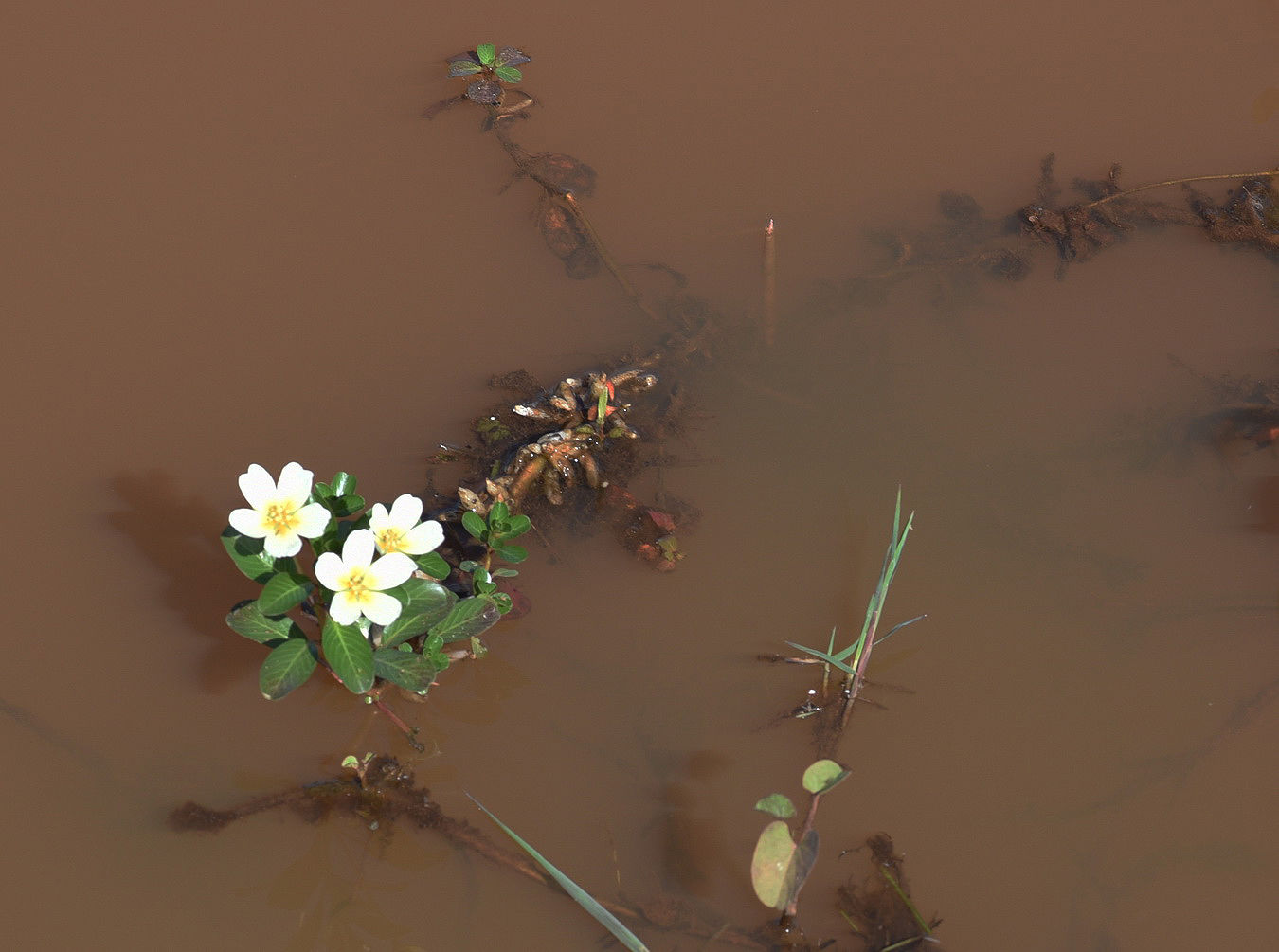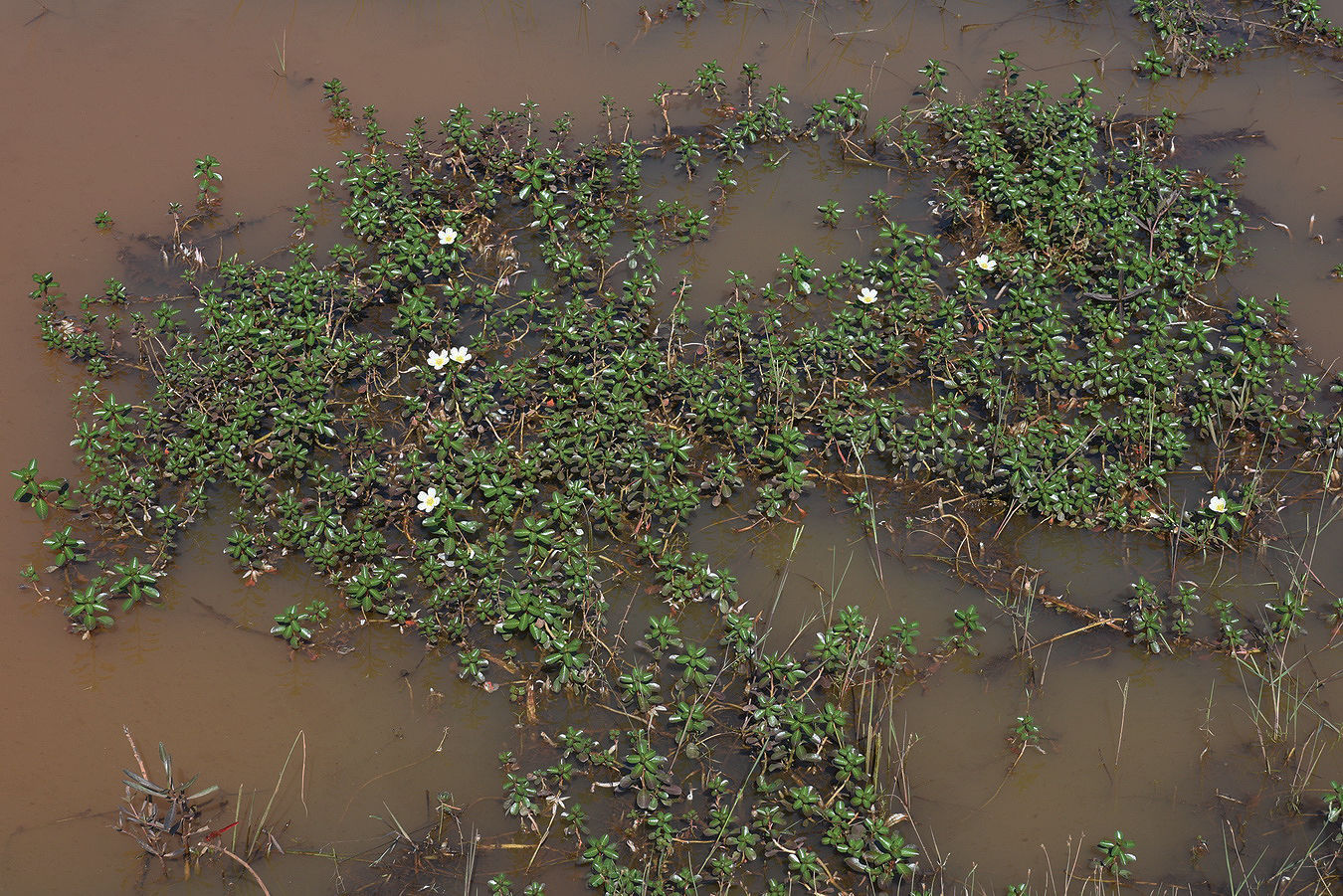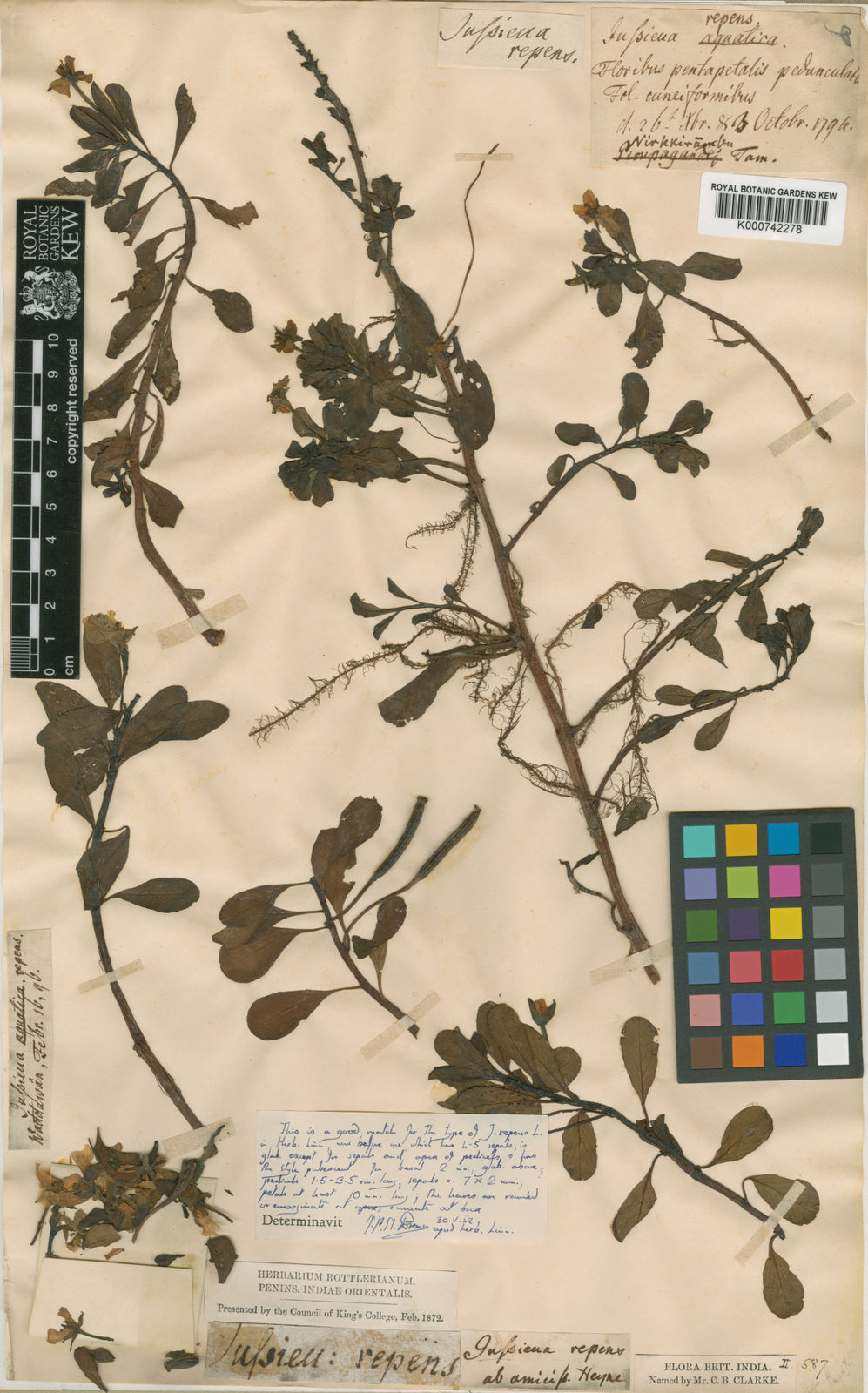Family: Onagraceae
Author: (L.) H.Hara
Bibliography: J. Jap. Bot. 28: 291 (1953)
Year: 1953
Status: accepted
Rank: species
Genus: Ludwigia
Vegetable: Unknown
Observations: Trop. & Subtrop. Asia to N. Australia, Mexico to C. America, Caribbean
Description
Water-primrose (Ludwigia adscendens) is a notable aquatic plant known for its widespread presence across tropical and subtropical regions of Asia, northern Australia, Mexico, Central America, and the Caribbean. This resilient species belongs to the Onagraceae family, commonly referred to as the evening primrose family.
Characterized by its floating, spongy stems, and bright yellow, funnel-shaped flowers, Ludwigia adscendens thrives in wetland habitats. These features not only make it an appealing sight but also play a crucial role in maintaining the ecological balance of its native regions. The plant’s flowers, which bloom prominently above the water’s surface, attract various pollinators, thereby facilitating the reproduction of numerous aquatic and nearby terrestrial flora.
The leaves of the water-primrose are elongated and buoyant, providing essential cover and breeding grounds for aquatic insects and small fish, which, in turn, support a diverse array of wildlife. Its ability to adapt to different environmental conditions makes it a crucial species for wetland restoration and conservation initiatives.
Ecologically, Ludwigia adscendens is significant for its role in water purification. The plant efficiently absorbs nutrients and pollutants from the water, thus improving water quality and supporting the health of aquatic ecosystems. It is also known for its rapid growth and spread, which can be both a boon and a bane. While it can provide quick coverage for degraded wetlands, its invasive potential in non-native areas demands careful management.
Ongoing research into the properties and applications of water-primrose continues to unfold its contributions to environmental science and horticulture. Botanical studies highlight its unique adaptability and potential uses in sustainable ecological practices. The plant was first scientifically documented in J. Jap. Bot. in 1953 by the botanist H. Hara, enhancing its recognition and understanding within the scientific community.
In summary, water-primrose (Ludwigia adscendens) stands out as a vital component of wetland ecosystems, offering considerable ecological benefits and posing opportunities and challenges for conservation efforts worldwide.
Common Names
Eng: water-primrose, creeping water primrose, red ludwigia, water primrose
Khm: កំពីងពួយ
Hin: pani ki ghas
En: Water-primrose, Creeping water Primrose, Red Ludwigia, Water primrose
Hi: Pani Ki Ghas
Km: កំពីងពួយ
Synonyms
- Jussiaea adscendens (L.)
Distribution
- Algeria (native)
- Angola (native)
- Assam (native)
- Bangladesh (native)
- Benin (native)
- Borneo (native)
- Botswana (native)
- Burkina (native)
- Burundi (native)
- Cambodia (native)
- Cameroon (native)
- Cape Provinces (native)
- Central African Repu (native)
- Chad (native)
- China South-Central (native)
- China Southeast (native)
- Congo (native)
- Cuba (native)
- Dominican Republic (native)
- Egypt (native)
- Eritrea (native)
- Ethiopia (native)
- Free State (native)
- Gabon (native)
- Gambia (native)
- Ghana (native)
- Guinea-Bissau (native)
- Hainan (native)
- Haiti (native)
- Honduras (native)
- India (native)
- Iraq (native)
- Ivory Coast (native)
- Jawa (native)
- Kenya (native)
- KwaZulu-Natal (native)
- Laos (native)
- Lebanon-Syria (native)
- Lesser Sunda Is. (native)
- Libya (native)
- Madagascar (native)
- Malawi (native)
- Malaya (native)
- Mali (native)
- Maluku (native)
- Mauritania (native)
- Mauritius (native)
- Mexico Gulf (native)
- Mexico Northeast (native)
- Mexico Southwest (native)
- Mozambique (native)
- Myanmar (native)
- Namibia (native)
- Nansei-shoto (native)
- Nepal (native)
- New Guinea (native)
- Niger (native)
- Nigeria (native)
- Northern Provinces (native)
- Northern Territory (native)
- Pakistan (native)
- Palestine (native)
- Philippines (native)
- Queensland (native)
- Rwanda (native)
- Réunion (native)
- Senegal (native)
- Sierra Leone (native)
- Sinai (native)
- Sri Lanka (native)
- Sudan (native)
- Sulawesi (native)
- Sumatera (native)
- Swaziland (native)
- Taiwan (native)
- Tanzania (native)
- Thailand (native)
- Togo (native)
- Turkey (native)
- Uganda (native)
- Vietnam (native)
- Zambia (native)
- Zaïre (native)
- Zimbabwe (native)
Additional Images
Other
Taken Apr 13, 2020 by susan brown (cc-by-sa)
Taken Jan 13, 2022 by huy HO (cc-by-sa)
Flower
Taken Oct 29, 2022 by PANJU BORKAKATY (cc-by-sa)
Taken Oct 29, 2022 by PANJU BORKAKATY (cc-by-sa)
Taken Nov 27, 2022 by Dr SAURABH SACHAN (cc-by-sa)
Taken Apr 19, 2020 by Sophie Macfarlane (cc-by-sa)
Taken Jan 13, 2022 by huy HO (cc-by-sa)
Leaf
Taken Apr 19, 2020 by susan brown (cc-by-sa)
Taken Aug 7, 2022 by Kypa Bayapu Reddy (cc-by-sa)
Taken Aug 12, 2022 by Kypa Bayapu Reddy (cc-by-sa)
Taken Apr 19, 2020 by Sophie Macfarlane (cc-by-sa)
Taken Apr 13, 2022 by Shouvik Kundu (cc-by-sa)
Habit
Taken Dec 3, 2007 by Sylvain Piry (cc-by-sa)
Taken Apr 13, 2020 by susan brown (cc-by-sa)
Taken Apr 13, 2020 by susan brown (cc-by-sa)
Taken Apr 19, 2020 by susan brown (cc-by-sa)
Taken Apr 19, 2020 by Sophie Macfarlane (cc-by-sa)

© copyright of the Board of Trustees of the Royal Botanic Gardens, Kew.

© copyright of the Board of Trustees of the Royal Botanic Gardens, Kew.

© copyright of the Board of Trustees of the Royal Botanic Gardens, Kew.
Sources
- WFO (No URL)
- IPNI (No URL)
- GBIF (https://www.gbif.org/species/7322187)
- POWO (http://powo.science.kew.org/taxon/urn:lsid:ipni.org:names:144324-2)
- PlantNet (https://identify.plantnet.org/species/the-plant-list/Ludwigia adscendens (L.) H.Hara)

















